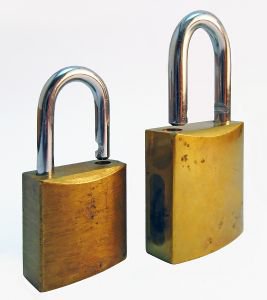Consider the following thought experiment: "Imagine that the hard drive in your University desktop died, or you lost your University laptop." Think briefly about what would be irretrievably lost, and what it would take to get up and running again. If neither of these questions cause you concern, stop reading here. If, like many people, these questions leave you uneasy, read on!
The University provides several places for you to store your data, including P:drive (soon to be replaced with OneDrive), departmental shared areas, and Research Data Storage (RDS). There's a summary here: Storage: Data storage options (Support Portal). All of these are securely stored and backed up centrally, and you can access some recent previous versions of files in case of accidental deletion or modification. Generally speaking, all research-related files should be stored in RDS. The RDS Service is the solution that underpins the requirements for the systematic management and storage of research data as defined within the University of Manchester Research Data Management Policy. The Library has a very useful page which goes into detail about how research files should be stored; see Storage (UoM Library).
You should make sure you are using RDS, as any files stored directly on your desktop or laptop's hard drive are not protected. It is hard to quantify the reliability of hard drives, including solid-state disks (SSDs), but failure probabilities of the order of a few percent per year are typically quoted. This suggests that across all researchers in the University, there is a significant risk of data loss for any data stored on non-backed-up desktop and laptop hard drives. Anecdotally, we hear of at least one case each year of a PhD student losing their laptop or having their hard drive die, and losing all their work.
You may have come across systems such as Windows Backup, Apple Time Machine, or Timeshift for Linux, which allow you to make complete restorable system backups (including user data, system settings, installed applications, etc) to an external hard drive or network share. Such systems are not supported by IT Services.
Many of you will be nodding your head and agreeing that you need to do something about all that code and data sitting in C:\Work, or on your unmanaged Windows, Mac or Linux machine, but surely it's not as important as that deadline you have next week? Maybe you could take the first step right now?
- Find out whether there is an existing Research Data Storage share available in your group. If so, ask your PI to request that you are added to it (the form is here), and tell them how much space you will need for your research-related files. Once you have been given access, set it up on your computer so it's always available (find out how here). Then, move your research-related files into it.
- If you are a PI, and there is no RDS share for your group, request one, add all the members of your group, and tell them to use it for their research-related files. No longer will you have to worry about what happens to your student's PhD if their hard drive dies or their laptop is stolen!
- Individual independent researchers are also entitled to apply for an RDS share; this could be an option if there isn't one for the group.
Research IT are happy to answer questions about using RDS; just send us an email!
May your data survive!
Further reading
- Research Data Storage service
- Accessing Research Data Storage (Windows, Mac, Linux)
- Windows: Locating and backing-up your data (Support Portal)
- Guide to storage of research data (Library)
- University of Manchester Research Data Management Policy

